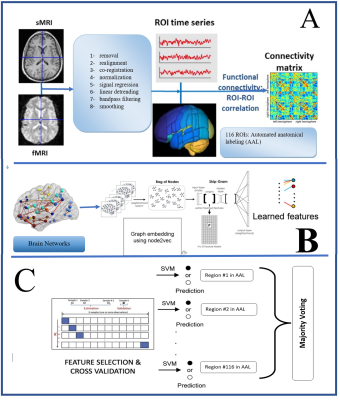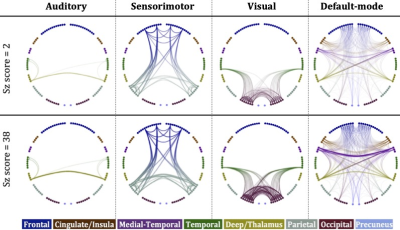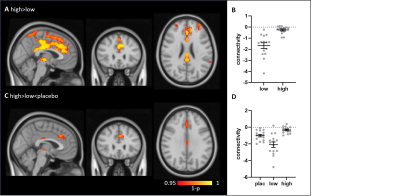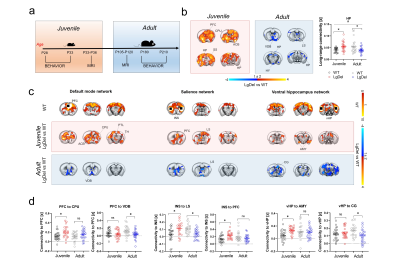Oral Session
Brain Connectivity in Psychiatric Disorders
Joint Annual Meeting ISMRM-ESMRMB & ISMRT 31st Annual Meeting • 07-12 May 2022 • London, UK

| 17:00 | 0713 |
A novel deep learning framework on brain functional networks for diagnosis of psychiatric diseases
Milad Mashhady Ali Poury 1, Ali Ameri 1, Saeed Masoudnia 2, Hosna Tavakoli2,3, Faezeh Ghasemi4,5, Reza Rostami6, and Mohammad-Reza Nazem-Zadeh2,7
1Department of Biomedical Engineering, Shahid Beheshti University of Medical Sciences, Tehran, Iran (Islamic Republic of), 2Research Center for Molecular and Cellular Imaging, Tehran University of Medical Sciences, Tehran, Iran (Islamic Republic of), 3cognitive neuroscience, Institute for Cognitive Science Studies, Tehran, Iran (Islamic Republic of), 4Medical Physics and Engineering, Shahid Beheshti University of Medical Sciences, Tehran, Iran (Islamic Republic of), 5Research Center for Biomedical Technologies and Robotics, Tehran University of Medical Sciences, Tehran, Iran (Islamic Republic of), 6Department of Psychology, University of Tehran, Tehran, Iran (Islamic Republic of), 7Medical Physics and Biomedical Engineering, Tehran University of Medical Sciences, Tehran, Iran (Islamic Republic of)
We developed a predicting algorithm based on brain connectivity to quantify the altered brain regions in schizophrenia, bipolar, and attention deficit hyperactivity disorders, to help diagnose them using neuroimaging biomarkers. Functional connectivity was utilized to construct brain graphs, on which the node2vec framework was applied to produce the node embeddings. The concatenation of embeddings was used to derive the region feature vectors to feed support vector machine (SVM) classifiers. Also, we build a model to assist the diagnosis of disorders using a weighted voting ensemble. The achieved accuracy proved to outperform to the state-of-the-art models.
|
|
| 17:12 | 0714 |
Increased structural connectivity in high schizotypy: a possible protective mechanism against schizophrenia.
Eirini Messaritaki1, Sonya Foley1, Kali Barawi2, and Derek K Jones1
1Psychology, Cardiff University, Cardiff, United Kingdom, 2Medicine, Cardiff University, Cardiff, United Kingdom
This work explores the link between brain structural connectivity and schizotypy in healthy participants. We found evidence of higher structural connectivity in the sensorimotor network of high-schizotypy participants compared to those with low schizotypy. Weaker evidence was also found for alterations in the auditory, default-mode and visual networks. In contrast, no significant differences were found in the structural connectivity of the whole-brain or limbic networks. The higher connectivity possibly shields these participants from schizophrenia. Our results agree with the results of works proposing that deficiencies in the sensorimotor brain network should be investigated as possible causes for schizophrenia.
|
|
| 17:24 | 0715 |
Unravelling the serotonergic contribution to citalopram-induced changes in functional connectivity
Anouk Schrantee1 and Ottavia Dispasquale2
1Department of Radiology and Nuclear Medicine, Amsterdam University Medical Center, University of Amsterdam, Amsterdam, Netherlands, 2Department of Neuroimaging, Institute of Psychiatry, King's College London, London, United Kingdom
While citalopram pharmacology has been extensively investigated and defined, the molecular mechanisms underlying brain functional response to this antidepressant are less well characterised. Therefore, we explored the functional response of the healthy brain to an acute citalopram challenge by enriching resting-state fMRI with molecular templates of serotonin neurotransmitters. We found that a high oral dose of citalopram induces significant alterations in 5-HT1A-enriched functional connectivity, and that serotonin transporter occupancy is linked with the interindividual functional response to citalopram in the SERT-related network. These findings set a new basis for a mechanistic understanding of the functional effects of citalopram in depression.
|
|
17:36 |
0716 |
Tracking developmental connectopathy in 22q11.2 deletion syndrome with cross-species fMRI
Filomena Grazia Alvino1, Silvia Gini1, Alberto Galbusera1, David Sastre1, Federico Rocchi1, Marco Pagani1, Caterina Montani1, Francesco Papaleo2, Massimo Pasqualetti1,3, Carrie Bearden4, and Alessandro Gozzi1
1Italian Institute of Technology, Rovereto (TN), Italy, 2Italian Institute of Technology, Genova, Italy, 3Department of Biology, Unit of Cell and Developmental Biology, University of Pisa, Pisa, Italy, 4Department of Psychiatry and Biobehavioral Sciences and psychology Semel Institute for Neuroscience and Human Behavior, UCLA, Los Angeles, CA, United States 22q11.2 Deletion Syndrome (22q11DS), a major risk factor schizophrenia and autism, is often associated with disrupted brain connectivity. However, the developmental and neural underpinnings of brain connectopathy in 22q11DS remain unclear. Using mouse fMRI, we found that 22q11DS-related dysconnectivity exhibits a stereotypical developmental trajectory, with widespread functional hyperconnectivity in pre-pubertal mice reverting to focal fronto-hippocampal hypoconnectivity in adulthood. Notably, juvenile hyperconnectivity, but not adult hypoconnectivity, was completely rescued by a GSK3β antagonist. Finally, guided by our mouse model data, we identified a similar developmental trajectory in 22q11DS patients, hence corroborating the translational validity of these findings. |
The International Society for Magnetic Resonance in Medicine is accredited by the Accreditation Council for Continuing Medical Education to provide continuing medical education for physicians.